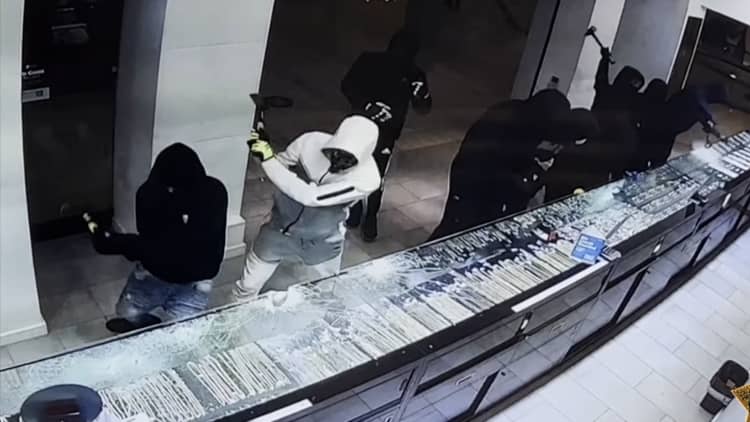Claims about organized retail theft are nearly impossible to verify
This is part one of a three-part series on organized retail crime. The stories will examine the claims retailers make about how theft is affecting their business and the actions companies and policymakers are taking in response to the issue. Be sure to check out parts two and three later this week.
Anti-theft locked merchandise on shelves with customer service button at CVS pharmacy, Queens, New York.
Lindsey Nicholson | Universal Images Group | Getty Images
Retailers have zeroed in on organized retail theft as a top priority, as more and more companies blame crime for lower profits.
But it is difficult for companies to tally just how much stolen goods affect their bottom lines — and even tougher to confirm their claims.
More than a dozen retailers, including Target, Dollar General, Foot Locker and Ulta, called out shrink, or more specifically retail theft, as a reason they cut their profit outlook or reported lower margins when they released earnings in May and June. Those mentions could flare up again as a flurry of retail companies will report financial results starting next week.
Many of them described organized theft as an industrywide problem that’s largely out of their control. Some retailers lumped it in with heavy discounting, soft sales and macroeconomic conditions as other factors that cut into their margins.
While organized theft is a real concern, it is nearly impossible to verify the claims retailers make about it. Companies are not required to disclose their losses from stolen goods, and it’s a difficult metric to accurately count, leaving the industry, investors and policymakers few choices but to rely on their word.
The surge in references to organized retail crime, and the dearth of transparency surrounding the issue, come as the companies’ claims take on a new weight. Retailers and trade associations are increasingly using their positions to influence lawmakers to pass new legislation that benefits them, hurts competitors and could disproportionally affect marginalized people, according to policy experts.
What is shrink, and how do retailers tally it?
Shrink is a retail industry term that refers to lost inventory. It can come from a variety of factors, including shoplifting and vendor fraud, which can be difficult to control. Shrink can also be caused by employee theft, administrative error and inventory damage, which retailers have more power to curb.
Retailers have repeatedly said organized theft drove shrink in recent quarters. But they rarely, if ever, break down how much of the inventory loss is due to crime and how much of a role other causes played.
They also don’t disclose their total losses from shrink and how they have changed over time. That makes it impossible to verify whether the issue has gotten worse and just how much of a bite it has taken from their bottom lines.

Multibillion-dollar companies commonly withhold information that can appear unflattering on earnings calls and press releases. That information can often…
Read More: Claims about organized retail theft are nearly impossible to verify
